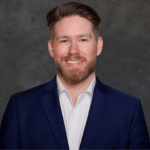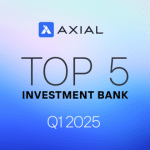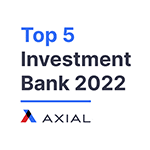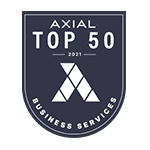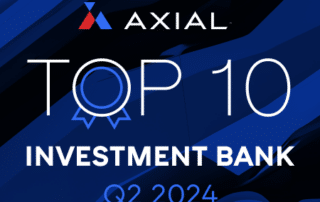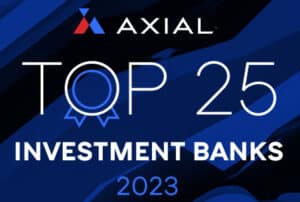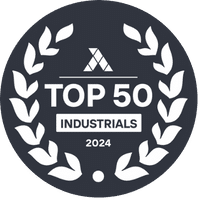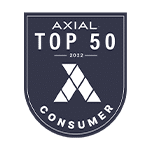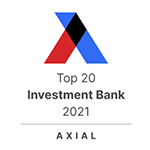
From Operations to Investment: Collision Repair Growth with Chris Calk
On this week’s episode, Cole Strandberg chats with Chris Calk, the former Director of Operations at GEICO, where he had a front-row seat to one of the nation’s largest DRP programs. Today, he’s an active investor and advisor in the industry, helping collision operators grow their businesses and align with the ever-evolving expectations of insurers. In this conversation, they dive into what insurers like GEICO look for in the ideal DRP partner, how shops can position themselves for long-term success in these programs, and why strong DRP relationships matter now more than ever. Then, they zoom out and hear why Chris has doubled down on collision repair as an investor—what makes this space exciting, where the opportunities lie, and how operators can build businesses that attract outside capital.
Chris Calk: Well, thanks for having me on. It’s been great to get to know you over the past year or so. My name is Chris Kalk. I have a career, had a career at Geico Insurance in the auto damage department. Started off low level, started as an adjuster, worked my way up fairly quickly and spent six or seven years managing the East Coast Director, East Coast Operations as a Director of Collision based out of our Washington D.C. office. In that role oversaw anything auto damage. Had a large field team, had a DRP program extremely important to us and manage all of our total losses. Wholly responsible for regulators and everything that came along with that and enjoy the ride and in 2023 decided that I wanted something a little bit different. So jumped out of the industry temporarily to get into M and A and came back about a year ago as an investor playing around in the collision space, but more focused on the suppliers and the service companies around collision shops. So enjoying, enjoying it so far and looking forward to this conversation.
Cole Strandberg: Awesome, man. Yeah, listeners can see pretty quickly how we would have gotten connected. No question. We play around, I think, in a lot of the same areas around this industry. So really appreciate your perspective on things. I want to zoom out a little bit later in our conversation and talk about your role and your viewpoint and perspective as an investor. But before we do, I’d be remiss not to spend a fair bit of time focused on your role at geico. So I want to start with, you know, when you were in that role, how did you view the role of DRPs as a part of your business from an insurer’s perspective?
Chris Calk: Right, right. Yeah, it’s a great question. I would say, Cole, it was, it evolved over time. Obviously our industry changed quite a bit from the time from 2010 to 2025 with COVID and all of that. But vital, I think, in a word, is what I would say it was a large lever for us to manage, to manage efficiencies, to manage customer service, to manage costs, to manage our relationships with body shops. It was probably one of the most important things that we did. It gave us the ability to concentrate our conversations with the best shops out there. And I used it personally as a tool to drive relationships with those shops so that we could create better customer service interactions and ultimately meet the goal that we all share on both sides with insurers and body shops to get that car back safely to the customer in a repaired condition. So a lot of different angles to it. I would say that we’ll probably get into this a little bit later, but the, the, the power of that lever, I would say, changed over the course of, of that period. Right. That it’s not as strong as it was. As the industry dynamics changed with higher total loss frequency, MSO consolidation and all of that, it became a different tool, a little bit less powerful tool in some ways, but still incredibly valuable, a very important tool for all insurers.
Cole Strandberg: I believe you were in that business at a fascinating time. And I’m going to relay kind of my perspective as an outsider, never, never having worked for an insurer. But the power dynamics leading up to Covid, in Covid and post Covid, some amazing whiplash just back and forth with. With who has the power leading up to Covid, it was kind of as it always was, to an extent, a relatively equal dynamic of supply and demand of body Shops willing to bring on DRPs and DRPs being open for business to body shops. Covid comes along very famously. We have these, this barrage of business coming into body shops, these lengthy wait times in many cases for shops where, hey, we don’t need these DRPs, we don’t need these insurers. And again, from an outsider’s perspective, we see supply and demand at work where rates are beginning to creep up to bring shops back in. And obviously here, the past 12 months, maybe a little bit less. That has again shifted where DRPs are getting pickier and pickier. Shops need the work more than ever. The power is really back in the hands of the insurers. So super, super interesting shifts that, that you saw and now are on a bit of another side. Seeing back to the basics, though, on, on the DRP piece, what are the core objectives that you as an insurer had in a DRP program? I know the immediate thing that comes to mind for shops in many cases is cost control, but tell me it goes far beyond that.
Chris Calk: It does. It does. It, it. At the end of the day, an insurance company is a financial institution, right? And, and so we, you know, it’s a critical part. You have to manage your cost control in order to be a successful financial institution. Right. So we do. I wouldn’t say that we lead with that, but it is one of the top three areas that we focus on whenever we’re picking a drp. Like any shop out there, customer relationships are critical. Insurance companies, especially the big eight, they invest a lot in, into their brand. And, you know, I guess if you take the origin of a DRP all the way back, why did they start doing it? It was really a perk. It was supposed to be a perk for the policyholders, and then it evolved into something much more complex into what it is today. But these companies are putting a lot, billions literally into building up their name.
Cole Strandberg: And we all know that Green Lizard.
Chris Calk: Very, we know the green Lizard. He’s a very, very expensive lizard, that charismatic fella. A lot of, A lot to get onto the, the NFL, you know, spotlight and all of that. But at the end of the day, the insurance companies are very good at bringing customers in. They’re very good at underwriting, they’re very good at pricing policies. They’re not very good at fixing cars. Right. And, and they realize that that’s a weakness of theirs. And, and if you don’t have a DRP system program or even with companies that have a robust DRP system, there’s pockets throughout the country where it might be lighter or weaker, it’s more difficult for the insurers to manage the customer experience. And so what does that mean if you’re investing a lot into bringing a customer in between 400 and $1,000 to bring one customer in a policyholder and you lose them as soon as they have a claim, well, that’s not good because you just paid out on their claim and then they leave because they had a poor customer experience. And so you see that, you really do see that in the data where you don’t have a DRP system, the customers aren’t as happy and they will leave. And so for us, it was critical to, it is critical to make sure that we partner with shops that have that same clarity as to what’s really important and work together to create a North Star that we can all work through, work to using KPIs and constant communication and all of that to make sure that that customer is given the experience that they deserve. And that’s a win win for everybody. Right? I think your last guest said win, win, win. I would agree with that. The other piece would be efficiency. You know, we had a. Not, not many carriers have large field teams anymore. GEICO still does, maybe one or two others still have large field teams. But if you, if you have a fragmented base of shops that you’re going to hundreds of shops across any given city and you have a field team that has to visit those, you can imagine how inefficient that can be. The claims process is still inefficient today, even, even in spite of all the technology that’s out there. And so concentrating as many claims as you can at one location for any, any given area at a trusted facility can, can increase your, your efficiency as a insurer quite considerably. So that’s a form of cost control. But what that means is actually customer experience as well, because we know, again, according to the data, that if you handle a claim faster, it’s a better customer experience. It’s less rental, it’s less backlog in the shops. The shops aren’t waiting on the insurers. All of that kind of goes together. And so the way I always looked at it was it’s intertwined. If you handle a claim correctly, it’s going to cost you less as an insurer. It’s going to be less disruptive and easier for the shops to process. And also it’s going to be a better customer experience as well because they feel that, they feel the results of everything coming together. And so and so we, we try to create that scenario.
Cole Strandberg: There we go, that win, win, win. Shout out to Sean Broadfield for that, that, that statement. I think it rings absolutely true. And the origin story of DRPs is interesting. I, I, I do think it merits double clicking like this was marketing fees. And it still is to an extent. When you look at what a DRP costs you in terms of discount on rates or whatever it comes back to, it’s a marketing fee for you from a shop’s perspective. It’s much more than that from a, an insurer’s perspective. But I digress. So we’ve talked about the power dynamics shifting today, and insurers now are less inclined to just immediately throw a bunch of shops on programs. They’re a little bit pickier. So if you’re listening to this, as a shop owner wanting to and interested in getting on an additional DRP or more DRPs, how would you position yourselves to be that partner of choice to your insurers of choice?
Chris Calk: Okay, well, maybe let me dive into that a little bit and maybe it would be good to provide some context as to what’s happening. And so we discussed the power dynamics, how they shifted. What does an insurance company give in return for everything? The stuff that you have to do as a shop to be on a program, it’s volume in most cases. And we went through the industry, but from my perspective, we went through a period where we had plenty of DRP facilities through, say, 2019. And then in 2020 we had way too many because we all know what happened. But then after that, we didn’t have, we didn’t have nearly enough. And so we couldn’t give our customers the experience that they needed or that they wanted because all shops, including DRPs, were very full. Well, since then, that’s changed quite a bit, as we all know. And so an insurer is, what they’re doing is they’re literally looking at a map. And that map is going to have their policyholders policies in force and down to the zip code or down to the location. And they need to line up the location of their partner facilities with where their policyholders live, or more specifically, where they get in accidents, where their cars need to be repaired. And so today what’s happening is the volume is down and they, the insurers can’t promise the volume. If you have too many shops in one area, right. Customer gets in a claim or has a claim once every seven years or so, you can calculate how many claim, how many shops, how many claims you’re Going to have down to the zip code almost to the day. And so if you have too many, not enough claims in a given area, you can’t promise that volume to any shops. And so what do you do if, if you’re in an operator shoes at an insurance company, you look at the partners that are in the area and you say, okay, which one, which of these shops is performing the best? And how do I, how can I quote, unquote, reward them? Or how do I expand that relationship with them to, to increase their volume potentially? And what does that mean? That means giving the customers in that area a better experience in the eyes of the insurer. So, you know, so, so that’s what’s happening. And so the competition to get onto a DRP program has increased over the past few years. Where it was, whether it will stay that way, who knows? But it has increased. But, but it’s not, it’s not terribly complex. I mean, how do you position yourself? You’re, you’re got to have great customer service. You got to care about the customer. You got to have great communication. The collision industry, things will go wrong every day. We all deal with something that’s just crazy and it happens. And I had many partners that would try to hide that, or they wouldn’t tell us. They wouldn’t tell me if they were just overwhelmed or maybe they took on my program. But they were also talking to another big eight. And then they turned them all on at the same time. And now, you know, they told me that they would prioritize, but they also told the others that they would prioritize. Right. And so it’s really about, the way I would think about it is what is your positioning as a shop? Right. What do you want to be? And I would, I would think about what’s your goal? Are you, are you planning to sell in a few years? Are you planning to grow organically? You know, what, what OEM certifications do you have? Do you want OEM certifications? Do those, does that positioning line up with any sort of, with a specific insurer? And so if you know that specific insurer, then, you know, you know their requirements. You can go talk to other DRPs of that insurer and what are they looking for? And you can, you can put in place the certifications, the, the look that that insurer might be going for. Collision is also very much a local game. Even the insurers who are taking the claims most of the time, and they’re processing DRP claims in another state now. Right. It wasn’t always like that. But most, I think now most of them or all of them have centralized teams that are processing these. They’re still inherently local. Insurance companies are still inherently local, even though they’re national organizations. And so they’re dependent on the feedback of those local teams for things like rates for, for the ears on the ground, what’s happening in that specific market. And it helps them make decisions at the top level. And so I would ask myself, do I like the team? Right? And what is that team telling me? You know, have you reached out to the local team and is there a fit there? Do you agree with, with what, you know, what they’re saying? And so if I were in the shop, if I were on the other side of it, I would probably shop around. I would probably make sure that I understand all of the different insurers, and I would pick a couple and I would try to position myself in a way that they are looking for, that those specific ones are looking for. I would engage in conversations with those over time. I would increase trust because again, communication is huge. If, when I was a director, if somebody that I never heard of called me and said that they wanted to be on the program, the very first thing I’m doing is calling my field adjusters, my field team. How are these guys? Have you worked with them before? And I’ll get some really quick feedback right then and there. Right. So most of the time is good, but not, you know, not sure. And so we have to. So I emphasize the communication part of it, even before the program, and then obviously the certifications and stuff that we all, that we all know about.
Cole Strandberg: Well, that’s a good point too, Chris. Sorry to interrupt here, but we had a series earlier this year all about OEM certifications, and in some conversations, it turned into an OEM versus DRP battle. In most, it was acknowledged, like, hey, these two work together. How do insurers, by and large, view OEM certification education?
Chris Calk: It’s important, and I think it’s, it’s continuing to evolve. And I think that in the Next, you know, five years, things may look different here. As the OEs continue to grab hold of the industry and the, the older cars in the US Vehicle fleet continue to drop off, and, and the prevalence of adas and etc are continue to increase. But the insurers have fleets that are relative. Most insurers have fleets that are relatively diverse. Right. So if you stand by a road and you, you write down the different models, the different makes of vehicles as they drive by, you got a Honda, you got a Chevy, you got another Chevy, you got another Honda, you got a BMW. That’s pretty much what the fleet of most insurers is like. And so insurers aren’t going to concentrate and say you need a GM certification or you need a Tesla certification. But it doesn’t hurt. It doesn’t hurt. And the reason I say that is because within a given area, so I was, I was big in Washington D.C. and that was my most important market. And you know, we would have, in that area, we would have, I think we had one Tesla partner and so, and maybe 100 DRP program DRP partners. Well, a couple times a week a Tesla would come in that couldn’t be repaired with at any other shop except the one Tesla partner that we had. Right. And so sometimes there’s a strategic advantage from the insurer’s perspective. And so I would, my answer would be, I don’t think that there’s a blanket answer. I think that it helps. But I think that your strategy with OEM certifications needs to align with your strategy, your positioning who you want to be as a shop. And then I would, I would restate the communication with the, with the insurance teams, what they’re looking for in an air in your area. Where are they struggling? Do they have a lot of a certain vehicle that they just constantly struggling with? Because for any number of reasons. And that may give you some insights and I think there’s some more analytical ways to go about that. Right. But generally speaking, I would say start with conversations. What is the local team saying? What does the insurance company need? Can you develop a rapport? And then, and then you can build a strategy on the OEM certs that aligns with what your DRP strategy might be.
Cole Strandberg: Supply and demand continues to resonate here, as does building that relationship and keeping that community communication going. What are some gaps and pitfalls you see most often with shops looking to join a drp, but for one reason or another they’re just not a good fit or not a value add.
Chris Calk: I think that over promising and under delivering is a big one. I think a lot of shops struggled with that. Maybe sometimes it’s because they didn’t understand what the requirements were and that’s, that was the insurance company’s fault for not explaining that sometimes it was, you know, hungrier than, than they could process. Right. So they allowed themselves to get backed up, which obviously is not good. Insurance companies rely on the DRPs quite a bit on the administrative side. So you’re the one greeting the Customer, you’re the one most the time writing that initial estimate. And we saw a lot of shops struggle to get the right person assigned to the right account. Right. Because every insurance company is going to have a little bit different requirements. And so as an owner, you need to understand what those requirements are, and then you need to think about your team and who’s actually going to be managing those requirements on your behalf. And we saw large gaps there constantly. Right. Things would go well and then a shop advisor would go somewhere else, they bring in a different writer, and then all of a sudden there’s issues, right? Big issues sometimes. And you just. That was a, that was a big, big issue for us many times.
Cole Strandberg: Makes total sense. You know, one of the coolest things I think about your role is the exposure to so many shops, to so many operators across a pretty diverse territory and a large territory as well. I’m sure you noticed there’s an upper echelon of shops. You got to interact with a ton of awesome, awesome operators. How did the best shops you worked with become the best shops or differentiate themselves to you as the best shops?
Chris Calk: Many, I think many areas I would lead with owner engagement. Right. An independent or a small mso. As an insurer at the level I was, I want to know the owner and I want to know that the owner is as engaged as I am in the relationship. We’re dedicating resources to make this happen. We want to know that you’re, you’re going to dedicate some resources as well to deliver everything that we need to deliver collectively. And so a good owner is engaged. They’re also deeply understanding what their business partner, the insurance company wants. And with that they implement tight processes. Right. And so they, they just entered into, as an owner, you enter into a business relationship with a, with a big corporation, the insurance company, and then they take the time to map their own operations to what the insurer needs, and then they enforce those expectations. And so if there’s an issue, they know exactly what went wrong. Right? They, they know that if they get a call from, from, you know, the director at an insurance company, oh my gosh, I shouldn’t be getting this call what broke in my process. They take ownership of it and then they help as a partner to fix whatever happened. And it goes both ways. I don’t, I don’t want to, I don’t want to imply any differently. Insurance companies mess up a lot too. And so the call comes the other way. Right. And so the, their team, something is broke on the agreed upon process that we all agreed on, their team calls the owner and it flows back to the people at the insurance company that need to know so that they can adjust their own processes along the way. But, and I think that just rehashing a couple of things that we already said, not, not over promising, that really was a big one, especially in the time period that in the later years, over promising. And again, deeply understanding what your shop is capable of, what your, what your technician specialties are and communicating if there’s, if there’s any gap between what you can do and what the insurance company needs you to do.
Cole Strandberg: Well said, man. Well, I’m going to shift gears on us pretty hard here. You mentioned at earlier on in our conversation you are no longer in, in the insurance industry. Tell us a little bit about what you have going on today.
Chris Calk: Yeah, yeah. Well, I appreciate that, Cole. So I loved insurance, but I got to a day where the golden handcuffs were no longer comfortable. And I decided that I didn’t agree with anybody but myself and two partners. So we decided to jump into the world of M and A and investing. We, we looked around in a few different industries and ultimately decided where can we add the most value? It’s in collision. We really enjoy it. I truly love the industry. I think it has excellent macro factors. There’s ups and downs, things happen, there’s tough times, there’s good times. But at the end of the day, good economy or bad economy, people are wrecking their cars. We all know that. So cash flows are relatively steady. It’s a great industry to invest in. We’re hands on, so I like getting my hands dirty. I was an operator at the insurance company. I was a very hands on operator. I like boots on the ground, I like moving around, talking to people. So I’m a hybrid between investor and operator in my own view. So work for. We founded a company called arcova Advisors. It’s an AI led exit advisory service. Not exclusively focused on collision because a couple of my partners have different exposure to different industries and so we’re a little bit more broad than that. But obviously I have, I can add a lot of value in this area. We are focused on the space that surrounds the body shops. We love shops. But as every shop owner here knows, there’s about 46 different PE firms calling you every day wanting to buy your shop and we don’t want to play that game. So we’re looking at the businesses that serve you, that serve the shops themselves. So think PDR companies, think the distributors, all the different companies that you call and depend on to run big ecosystem.
Cole Strandberg: Absolutely.
Chris Calk: So we do that. But we also the last couple of years working with a lot of different small business owners and find that not all of them are ready to. Not all of them have maximized their value is the way I look at it. Right. There’s you have an asset, your business is probably the most valuable asset in your net worth. And not all owners have optimized that and have prepared themselves to actually exit and move. So we’re putting ourselves in a little bit before the actual transaction itself. A couple of years wherever you’re at before. And we can help to build your business and prepare it for exit by introducing good smart marketing strategies can help you with DRP relationships. We’ve got some AI tools, we’ve got access to some of the best AI developers in the world actually. It’s amazing what they can do. And so we’re developing some tools to help focus on, on each industry, including the collision side. But most importantly, we are in the market to acquire a, a business in the ecosystem. And so we’ve got a couple deals cooking and hopefully very soon we’ll, we’ll make an announcement there.
Cole Strandberg: Love it, man. Well, you mentioned the competition in collision repair especially. Certainly some activity in the broader ecosystem as well. What criteria do, do you look for for now when evaluating a company in that ecosystem? What do you like to see?
Chris Calk: Okay, so I think like any, any other business, so Collision has some unique aspects to it, obviously insurance relationships and, and all of that, but it’s, it’s a local game. So I’m going to start with the brand, the local brand, start with the, the competition or then go into the competition. Where are you physically located? What, what differentiators do you have versus some of the others? Is it aesthetics? Is it equipment? Is it certifications, is it technician abilities? All of that. Now I have a little different view on, on what a big strategic and MSO might, might have because their, their model would be to put in their own model after the acquisition. Right. So we’re, we’re a little different than that. But, but really the basics, is it a, is it a sound business? Are your, your P and LS healthy? Do you have a good source of leads coming in, customers coming in and is it a diversified source of customers? Right. We talked a lot about DRPs. Are you 95% dependent on one DRP? That’s a risk and that’s not good from a buyer’s perspective to be that concentrated. So have you balanced across different DRPs? If that’s your strategy? Or if that’s not your strategy, do you have good relationships with the dealerships and everywhere, the community itself to, to gain leads that way. So. And then, you know, depending on, on whether or not the ownership decides to stay, there’s a large personality factor. Maybe not the best way to say it, but, you know, can we work?
Cole Strandberg: It’s, it’s beautifully put. Absolutely.
Chris Calk: Okay. Okay, thanks. Yeah. Can we work together? Right. We’re, we’re. I’m salt of the earth guy, boots on the ground. Like I said, we’re all here to do a good thing for our, for our customers and we have slightly different viewpoints, but at the end of the day, we’re here to do it together and so does the ownership itself. Share that. And I think that’s probably. You need a found business, you need a sound business, you need good financials, you know, everything I just said, but really, the willingness to work together is, is critical. And are you willing to go through the, the diligence process? That’s not fun, right? Have you thought about how you’re going to do that? Is your business ready to do that? And then post closing, post acquisition, what is your role? Have you thought that through? That is something that we ask ourselves. If you haven’t thought it through, it actually is something that, that we take a pause and say, okay, well, you probably need to think about what you’re going to do as after you sell because, you know, it’s good for everybody. It’s actually a little bit of a risk for a buyer if the seller doesn’t know what they’re going to do. Because now we’re thinking you’re going to open a shop across the street. So, like, think that through and really try to envision what you look like after the sale as well.
Cole Strandberg: Man, the psychological component of M and A, especially in this industry, is so huge. I say it all the time, man. There are plenty of passionate business owners and H vac or plumbing or whatever who love their business. In the case of collision repair and automotive in more generality, not only do they love their business, they love their industry. A lot of these guys are going to car shows on the weekend. It’s part of who they are. It’s what they do in their free time, it’s what they do in their spare time. It adds an emotional piece that makes these businesses so wonderful, but it makes these transactions a little bit more challenging.
Chris Calk: It does, it does. We see that quite a bit. Yeah, we do. And I think a part of our role is to help you envision that. Right. You know, a lot of shop owners, and really any industry, but a lot of shop owners know that at some point they’re going to need to either pass the shop down a generation or if that’s not an option, to sell it to somebody else. Well, that’s a massive life event. And, you know, have you thought about what that’s going to look like after the fact? And are you able to articulate that? Can you scratch that itch? If you love going to car shows, great, keep going. Can you expand your involvement at those? Or is there somewhere else in the industry that you would really enjoy being a part of? Is it speaking, is it advising? Is it staying on with the buyout firm? Right. Not all firms would do that. Msos. Sometimes they will, sometimes they won’t, but not all firms would. And if that’s something that you want, do you have a partner that wants that and you can work with? Do they align in that regard as well?
Cole Strandberg: Well said. Today is a weird time in this ecosystem, no question. Plenty of headwinds we can see coming forward and that we’re experiencing today. Plenty of tailwinds, too. What risks do you see and what challenges do you see ahead for this industry that you’re going to take into account as you’re looking for businesses and app businesses to acquire?
Chris Calk: I’ll answer it from a macro perspective, if that’s okay.
Cole Strandberg: Yeah, perfect.
Chris Calk: There are a number of shifts happening, obviously, MSO consolidation that we all know about, insurance consolidation as well. It’s, it’s not as, it’s not highlighted as much, but the big eight insurance companies have gone up, have eaten up about 20 points of market share over the past 10 years. So they’re looking for Scaled partners. And so there’s this natural synergy that’s happening between the insurance, the big insurance companies and the big MSOs. And so what’s going to, what’s going to happen there, in my view, is further and deeper integration and those two parties and the OEs are going to control the narrative more and more and more there. What’s driving that on the shop side is, is the capital requirement of the industry. So we all know the technology of vehicles and, and all of that’s increasing. We’re all, we all have to make investment. Shop owners have to make very large investments to keep up. And it. Either that’s not tenable for an individual mom and pop, or it’s not something that they’re willing to do. But in any case, the big MSOs are better equipped, better financed in order to make those big investments at scale. So I do think that that’s going to continue. I think the forces driving the consolidation and again, on both sides are going to continue. Vehicles are going to become more and more complex. And. And so from a investor perspective, I’m. I do go back to the basics with that in mind, with those macro views in mind. And how does. Is a shop well equipped to stand up to that, or is it. Is it better equipped to be an mso? Right. Sold to an mso, but from my perspective, is it a shop that can compete? Do they have certifications? Do they have a niche? Does the community love them? If it’s a rural shop and they’re the only one out there, that’s fantastic in a lot of ways. Right? And that’s a moat. That’s something that we love to see. And so it can come in different flavors, Cole. It can be many different things, but we’re really looking for some sort of protection, some sort of positioning that protects that. That. That investment, that shop against the macro and really positions it to ride that macro wave. Ride that, ride the changes. You know, if you’ve got certifications and your market is full of Teslas and you have a. A Tesla certification, you’re just slammed with them. That could be a good thing, right? Not always, but it could be a really good thing. And. And it’s all about good strategy, good, good sound business. And. And, you know, are you. Are you set up to ride the wave that’s. That’s changing the industry?
Cole Strandberg: Ride the wave. Well put, man. Yeah, you. You zoom out a little bit on this industry, and I’d be willing to say more has changed or will change than is remaining the same. I mean, we are seeing just every component of this industry changing at a rapid pace. From the market dynamics you mentioned, with consolidation at multiple levels, all the way down to the vehicles that we’re fixing. They’re totally different than they once were. The technicians that we’re hiring and training are totally different than they once were. That’s scary for many, especially many who are ending, you know, coming to the end of their career. It’s a compelling opportunity for folks who have that Runway, who have that vision and who have that appetite to ride that wave, as you put it. Chris, this has been an absolute blast, man, for people who want to get in touch and appreciate what they heard today from you. How can they do that and follow along with your journey?
Chris Calk: Great. I appreciate it. LinkedIn is a great place to start. Pretty active there.Cole Strandberg: Awesome man. I will include both of those in the show notes in the interim. Chris, thank you so much for joining us here on the Collision Vision.

